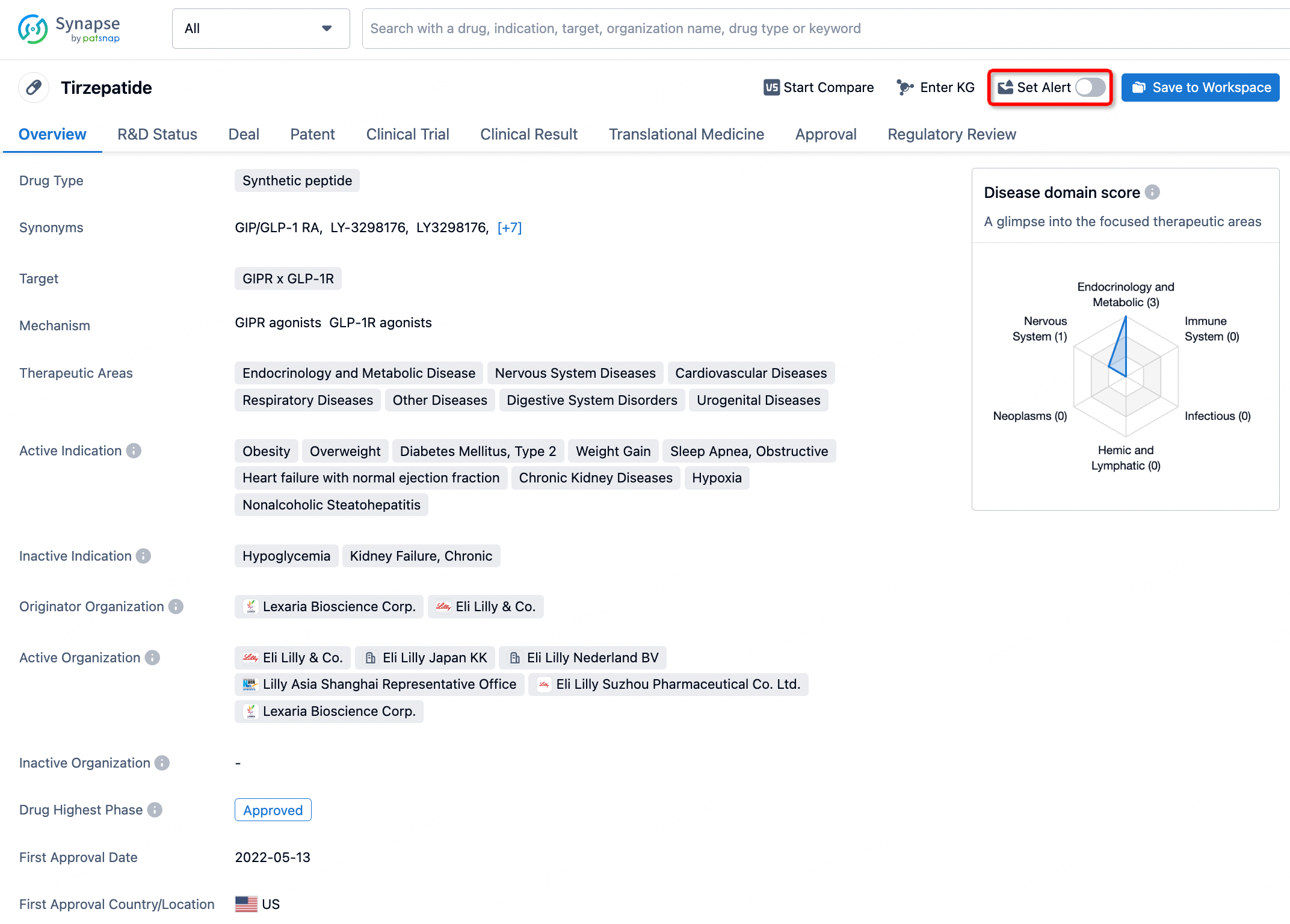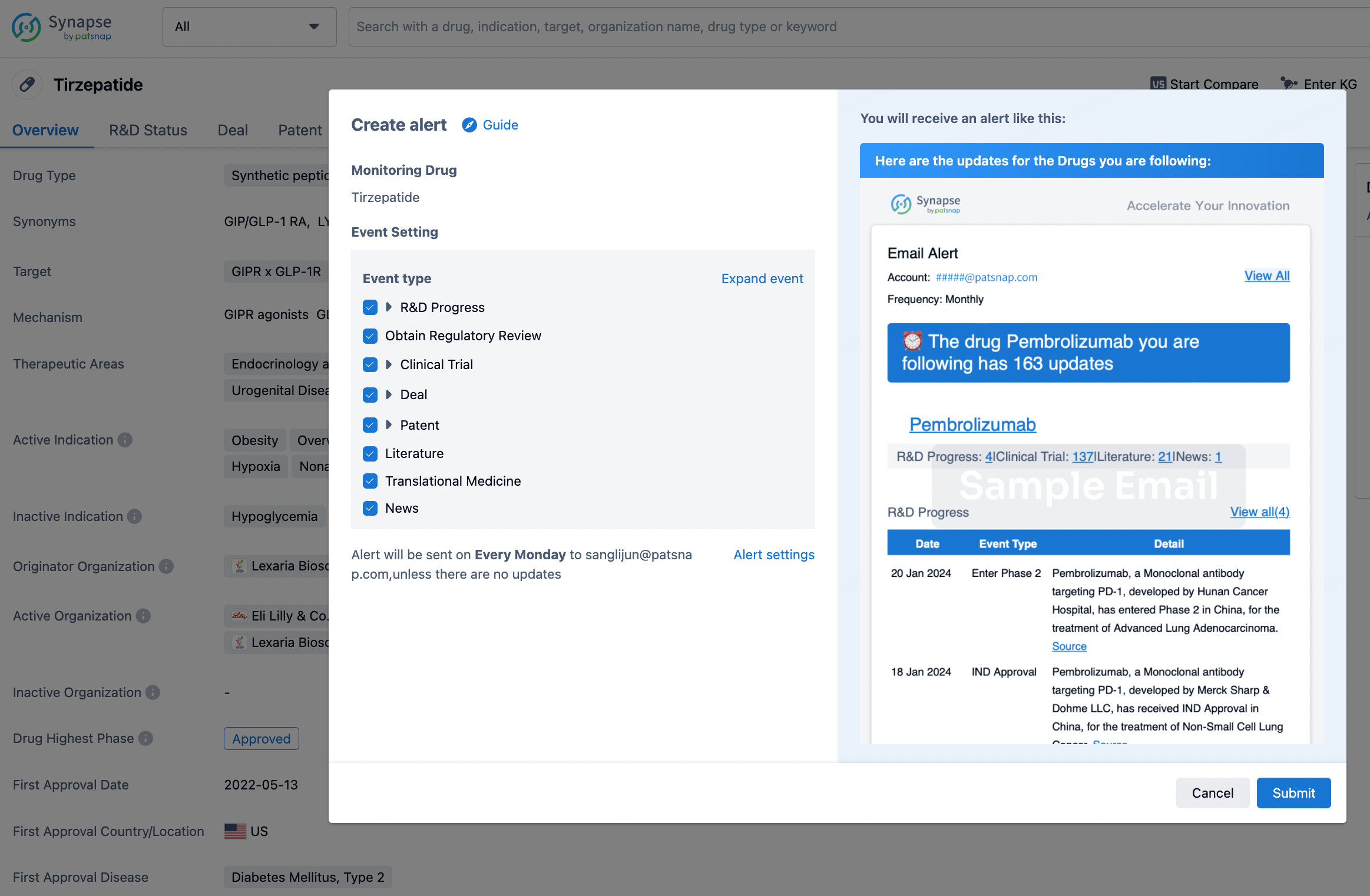Request Demo
What are the side effects of Clemizole Penicillin?
12 July 2024
Clemizole Penicillin is an antibiotic medication used to treat a variety of bacterial infections. Like any medication, it is essential to be aware of its potential side effects. Understanding these side effects can help patients and healthcare providers monitor and manage any adverse reactions that may occur during treatment.
One of the most common side effects of Clemizole Penicillin is gastrointestinal distress. Patients may experience symptoms such as nausea, vomiting, diarrhea, and abdominal pain. These symptoms are generally mild and tend to resolve on their own as the body adjusts to the medication. However, if these symptoms persist or become severe, it is important to consult a healthcare provider.
Allergic reactions are another potential side effect of Clemizole Penicillin. Some individuals may be hypersensitive to penicillin-class antibiotics, which can result in a range of allergic responses. Mild allergic reactions may include skin rashes, hives, and itching. In more severe cases, patients may experience anaphylaxis, a life-threatening reaction characterized by difficulty breathing, swelling of the face and throat, and a rapid drop in blood pressure. Immediate medical attention is crucial if anaphylaxis is suspected.
Clemizole Penicillin can also affect the body's normal flora, potentially leading to secondary infections. One common example is a yeast infection, which can occur when the antibiotic disrupts the natural balance of microorganisms in the body. Symptoms of a yeast infection may include itching, redness, and discharge in affected areas. Probiotics and antifungal medications are often used to manage these secondary infections.
Another concern with Clemizole Penicillin is the potential for antibiotic resistance. Overuse or misuse of antibiotics can lead to the development of resistant strains of bacteria, making future infections more difficult to treat. It is important to take Clemizole Penicillin exactly as prescribed and to complete the entire course of treatment, even if symptoms improve before the medication is finished.
Some patients may experience hematologic side effects while taking Clemizole Penicillin. These can include changes in blood cell counts, such as anemia, leukopenia (a decrease in white blood cells), and thrombocytopenia (a decrease in platelets). Regular blood tests may be necessary to monitor for these changes, especially in patients who require long-term antibiotic therapy.
In rare cases, Clemizole Penicillin may cause liver or kidney dysfunction. Symptoms of liver problems can include jaundice (yellowing of the skin and eyes), dark urine, and pale stools. Kidney issues may present as changes in urine output, swelling in the legs or ankles, and unexplained fatigue. If any of these symptoms occur, it is essential to seek medical evaluation promptly.
Neurological side effects, although uncommon, can also occur with Clemizole Penicillin. These may include dizziness, headache, and, in rare cases, seizures. Patients should report any unusual neurological symptoms to their healthcare provider to determine if the medication needs to be adjusted or discontinued.
In conclusion, while Clemizole Penicillin is an effective treatment for bacterial infections, it is not without potential side effects. Patients should remain vigilant for signs of gastrointestinal distress, allergic reactions, secondary infections, hematologic changes, liver or kidney dysfunction, and neurological symptoms. Close communication with a healthcare provider can help manage these side effects and ensure the safe and effective use of Clemizole Penicillin.
One of the most common side effects of Clemizole Penicillin is gastrointestinal distress. Patients may experience symptoms such as nausea, vomiting, diarrhea, and abdominal pain. These symptoms are generally mild and tend to resolve on their own as the body adjusts to the medication. However, if these symptoms persist or become severe, it is important to consult a healthcare provider.
Allergic reactions are another potential side effect of Clemizole Penicillin. Some individuals may be hypersensitive to penicillin-class antibiotics, which can result in a range of allergic responses. Mild allergic reactions may include skin rashes, hives, and itching. In more severe cases, patients may experience anaphylaxis, a life-threatening reaction characterized by difficulty breathing, swelling of the face and throat, and a rapid drop in blood pressure. Immediate medical attention is crucial if anaphylaxis is suspected.
Clemizole Penicillin can also affect the body's normal flora, potentially leading to secondary infections. One common example is a yeast infection, which can occur when the antibiotic disrupts the natural balance of microorganisms in the body. Symptoms of a yeast infection may include itching, redness, and discharge in affected areas. Probiotics and antifungal medications are often used to manage these secondary infections.
Another concern with Clemizole Penicillin is the potential for antibiotic resistance. Overuse or misuse of antibiotics can lead to the development of resistant strains of bacteria, making future infections more difficult to treat. It is important to take Clemizole Penicillin exactly as prescribed and to complete the entire course of treatment, even if symptoms improve before the medication is finished.
Some patients may experience hematologic side effects while taking Clemizole Penicillin. These can include changes in blood cell counts, such as anemia, leukopenia (a decrease in white blood cells), and thrombocytopenia (a decrease in platelets). Regular blood tests may be necessary to monitor for these changes, especially in patients who require long-term antibiotic therapy.
In rare cases, Clemizole Penicillin may cause liver or kidney dysfunction. Symptoms of liver problems can include jaundice (yellowing of the skin and eyes), dark urine, and pale stools. Kidney issues may present as changes in urine output, swelling in the legs or ankles, and unexplained fatigue. If any of these symptoms occur, it is essential to seek medical evaluation promptly.
Neurological side effects, although uncommon, can also occur with Clemizole Penicillin. These may include dizziness, headache, and, in rare cases, seizures. Patients should report any unusual neurological symptoms to their healthcare provider to determine if the medication needs to be adjusted or discontinued.
In conclusion, while Clemizole Penicillin is an effective treatment for bacterial infections, it is not without potential side effects. Patients should remain vigilant for signs of gastrointestinal distress, allergic reactions, secondary infections, hematologic changes, liver or kidney dysfunction, and neurological symptoms. Close communication with a healthcare provider can help manage these side effects and ensure the safe and effective use of Clemizole Penicillin.
How to obtain the latest development progress of all drugs?
In the Synapse database, you can stay updated on the latest research and development advances of all drugs. This service is accessible anytime and anywhere, with updates available daily or weekly. Use the "Set Alert" function to stay informed. Click on the image below to embark on a brand new journey of drug discovery!
AI Agents Built for Biopharma Breakthroughs
Accelerate discovery. Empower decisions. Transform outcomes.
Get started for free today!
Accelerate Strategic R&D decision making with Synapse, PatSnap’s AI-powered Connected Innovation Intelligence Platform Built for Life Sciences Professionals.
Start your data trial now!
Synapse data is also accessible to external entities via APIs or data packages. Empower better decisions with the latest in pharmaceutical intelligence.


